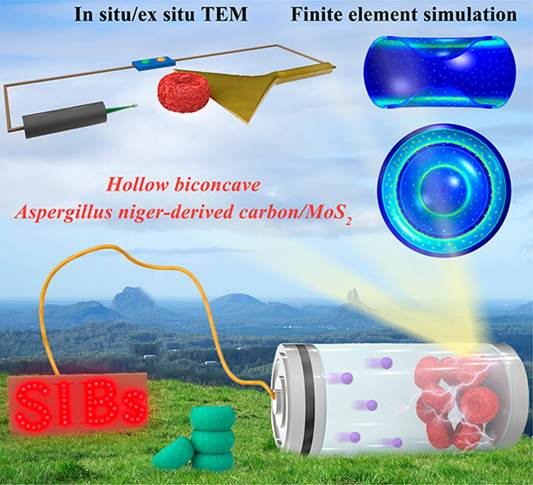我室孙世刚教授和廖洪钢教授在 ACS nano 上发表论文:A “Biconcave-Alleviated” Strategy to Construct Aspergillus niger-Derived Carbon/MoS2 for Ultrastable Sodium Ion Storage
摘要:Two-dimensional layered materials commonly face hindered electron transfer and poor structure stability, thus limiting their application in high-rate and long-term sodium ion batteries. In the current study, we adopt finite element simulation to guide the rational design of nanostructures. By calculating the von Mises stress distribution of a series of carbon materials, we find that the hollow biconcave structure could effectively alleviate the stress concentration resulting from expansion. Accordingly, we propose a biconcave-alleviated strategy based on the Aspergillus niger-derived carbon (ANDC) to construct ANDC/MoS2 with a hollow biconcave structure. The ANDC/MoS2 is endowed with an excellent long-term cyclability as an anode of sodium ion batteries, delivering a discharge capacity of 496 mAh g–1 after 1000 cycles at 1 A g–1. A capacity retention rate of 94.5% is achieved, an increase of almost seven times compared with the bare MoS2 nanosheets. Even at a high current density of 5 A g–1, a reversible discharge capacity around 400 mAh g–1 is maintained after 300 cycles. ANDC/MoS2 could also be used for efficient lithium storage. By using in situ TEM, we further reveal that the hollow biconcave structure of ANDC/MoS2 has enabled stable and fast sodiation/desodiation.

文章链接:https://pubs.acs.org/doi/10.1021/acsnano.1c05590